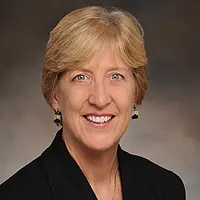The mantra of integrated comprehensive health care is supposed to come to life in a Universal Health Coverage (UHC) world. Siloed funding streams and parallel infrastructure (yes, we’re talking to you, HIV/AIDS) are expected to fade away and be replaced by cohesive packages of care offered universally at all levels of the health care system. That is a tall order and will take many years to accomplish in low-income and low-middle income (LLMIC) countries whose health systems have been co-architected by donor priorities and hobbled by inadequate resources for health. The United Nations General Assembly is holding a High-Level Meeting in New York City this week to discuss how to move towards achieving UHC and thousands of NGOs, donors, technical agencies, and UN insiders have gathered to learn where they fit in that vision.
It takes a leap of faith to imagine a fully integrated health care delivery system efficiently delivering high quality health care that addresses the needs of wealthy countries, let alone the more diverse array of needs of LLMICs. But with the thought of UHC dancing in our heads—or at least in the streets of New York City around the United Nations Building—we thought it is worth looking at some examples and early evidence about how noncommunicable disease (NCD) care can be provided with other health services, contrary to standard practice.
The evidence about health care integration is still emerging and the clearest message to date is that there are multiple ways to integrate care and multiple ways to interpret the results. A few examples of integration include: integrating risk screening while maintaining separate care facilities for co-morbid diseases; integrating screening and care for multiple health conditions within the same specialized clinic; and providing comprehensive care at primary health clinics. Below are a few other interesting examples of early efforts to integrate NCDs with other health care services.
Kenya and UHC
President Uhuru Kenyatta of Kenya made achieving UHC by 2022 one of four pillars of his political agenda. A UHC pilot program was rolled out in four counties in 2018 (Kisumu, Machakos, Nyeri, and Isiolo) to be later scaled up to all counties. These four counties have a high prevalence of both communicable diseases and NCDs, high population density, high maternal mortality, and high incidence of road traffic injuries among all 47 counties in the country. However, challenges in delivering the promised services are already evident. With a focus on treatment and services provided at health facilities rather than on preventive services, the government is struggling to finance the 70% of overall budget that is needed for procuring medicines and other commodities. RTI is working with the World Bank to prepare an NCD investment case for Kenya to inform the scale of NCD services that can be included in the UHC package. There are also challenges pertaining to accountability and transparency—mechanisms which are not yet well developed. Therefore, it is too soon to draw conclusions about how Kenya’s integrated UHC program will fare in the long run.
Cost-effectiveness of Integrating HIV and NCD Screening
Very little evidence is available about cost-effectiveness of integrated NCD and HIV/AIDS care. In sub-Saharan Africa, HIV/AIDS programs have explored integrated care that incorporates screening and/or treatment for noncommunicable chronic conditions. Yet, there is evidence of economic inefficiency when providing complex care for multiple morbidity in resource-limited settings. Assumptions about achieving greater efficiencies in delivering quality integrated chronic care have not been sufficiently evaluated. The way integration occurs can determine how costly it is to add screening for NCDs into an HIV program. Costs increase by 6-30% of the HIV program cost, even for just one NCD. In one specific case, when cervical cancer screening was incorporated into HIV/AIDS care as opposed to a stand-alone screening, cost savings resulted due to reductions in overhead, patient transport, and provider time.
National Adolescent Health Programme/Rashtriya Kishore Swasthya Karyakram (RKSK) – India
The RKSK programme was launched in 2014 by India’s Ministry of Health and Family Welfare (MoHFW) to ensure holistic development of the country’s 253 million adolescents. RKSK shifts adolescent health programming from solely offering sexual and reproductive health through clinics to including more preventive and promotive services, including nutrition, injuries and violence (including gender-based violence), NCDs, mental health and substance misuse. The programme requires that different vertical programmes and schemes converge for adolescent health. A high degree of intra- and inter-ministerial coordination across the health system integrates the existing infrastructure and resources of multiple programs within the Ministry of Health and Family Welfare (MoHFW) and others outside the MoHFW, such as Women and Child Development, Human Resource Development, and Youth Affairs and Sports, all with the aim of catering to diverse health concerns of adolescents. However, the evaluation of the RKSK programme is still awaited.
While we don’t claim this to be a comprehensive review, several strong conclusions emerge from these examples:
- There is no roadmap for integrated chronic care
- Few examples for NCD integration with other health care services exist at the country level
- There is little evidence about the cost-effectiveness of integration models
RTI is exploring different ways to include NCD care in LMICs, through both public and private provision. Some of these include greater attention to early screening and disease prevention in primary health care while others involve strengthening pillars of the health system, such as community health worker capacity. We look forward to tackling these issues and exploring potential solutions at the UN High-Level Meeting on Universal Health Coverage on September 23.

Global Noncommunicable Diseases
Learn more about how we are collaborating to reduce the global burden of NCDs through implementation-focused strategies.

